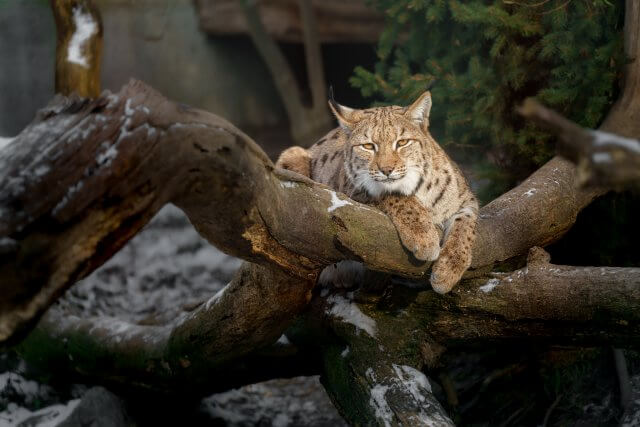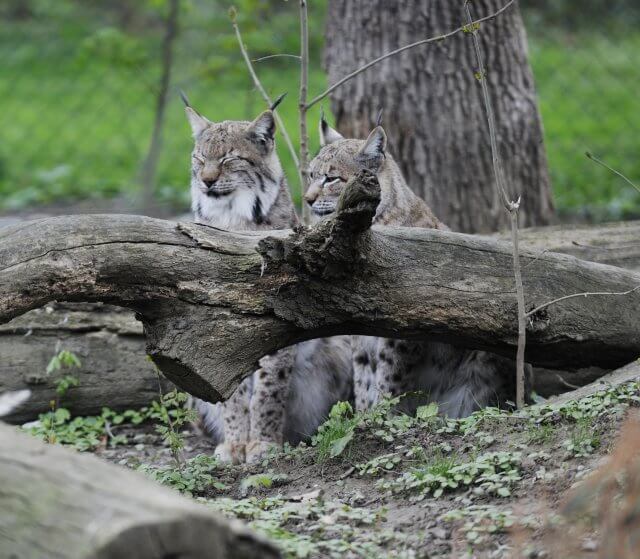Bobcats and Trees: The Top 7 Tree-Related Behaviors of Bobcats
Bobcats and Trees
Bobcats are fascinating creatures that are known for their agility and adaptability. These medium-sized wild cats can be found in various habitats across North America, from forests to deserts. While they are primarily terrestrial animals, bobcats also exhibit interesting behaviors when it comes to trees. In this article, we will explore the top 7 tree-related behaviors of bobcats, shedding light on their unique relationship with these towering giants.
1. Tree Climbing
Contrary to popular belief, bobcats are skilled climbers and are capable of scaling trees with ease. While they may not climb trees as frequently as their larger relatives, such as lynxes, bobcats often use trees as vantage points for hunting or to escape from predators. Their sharp retractable claws provide them with excellent grip, allowing them to navigate tree trunks and branches effortlessly.
For example, a study conducted in Arizona found that bobcats frequently climbed trees to hunt birds and squirrels. The researchers observed bobcats patiently waiting on tree limbs, ready to pounce on unsuspecting prey below. This behavior demonstrates the bobcat’s ability to adapt its hunting strategies to different environments.
2. Resting and Sheltering
Trees also serve as resting and sheltering spots for bobcats. These elusive creatures often seek refuge in the branches of trees during the day, using the cover to avoid predators and conserve energy. By resting in trees, bobcats can remain hidden from potential threats while keeping a watchful eye on their surroundings.
One study conducted in California found that bobcats frequently used trees as resting spots during the day. The researchers discovered bobcat resting sites in the forks of tree branches, where the cats could comfortably curl up and rest undisturbed. This behavior highlights the bobcat’s ability to utilize trees as a safe haven in their natural habitat.
3. Marking Territory
Bobcats and Trees: Bobcats are territorial animals and use various methods to mark their territory, including scent marking and scratching. Trees play a crucial role in this behavior, as bobcats often scratch tree trunks to leave visual and olfactory cues for other bobcats in the area.
For instance, a study conducted in Texas found that bobcats frequently marked trees along their territorial boundaries. The researchers observed distinctive claw marks on tree trunks, indicating the presence of bobcats in the area. By marking trees, bobcats communicate their presence and assert their territorial rights to other bobcats.
4. Hunting Platforms
Trees offer bobcats an advantageous position for hunting. By climbing trees, bobcats can gain a better view of their surroundings, allowing them to spot potential prey more easily. From their elevated position, bobcats can plan their hunting strategies and launch surprise attacks on unsuspecting prey.
For example, a study conducted in Colorado found that bobcats used trees as hunting platforms to target mule deer fawns. The researchers observed bobcats waiting patiently on tree limbs, scanning the area for fawns. Once a suitable opportunity arose, the bobcats would swiftly descend from the tree and pursue their prey. This behavior demonstrates the bobcat’s ability to utilize trees as strategic tools for successful hunting.
5. Travel Corridors
Trees can also serve as travel corridors for bobcats, allowing them to move between different areas efficiently. Bobcats are known to use tree branches as bridges, enabling them to cross obstacles such as rivers or steep terrain without expending excessive energy.
For instance, a study conducted in Florida found that bobcats frequently used trees to navigate through fragmented habitats. The researchers observed bobcats using fallen logs and overhanging branches to move between patches of suitable habitat. This behavior highlights the bobcat’s resourcefulness in utilizing trees as natural pathways.
6. Escaping Predators
Trees provide bobcats with a means of escape when faced with potential predators. When threatened, bobcats can quickly climb trees to seek safety in the heights. Their agility and climbing skills allow them to outmaneuver larger predators that may not be as adept at climbing.
For example, a case study in Montana documented a bobcat successfully evading a pursuing coyote by climbing a tree. The bobcat managed to reach a safe height, leaving the coyote unable to follow. This behavior demonstrates the bobcat’s ability to use trees as a defense mechanism against predators.
7. Maternal Dens
Bobcats and Trees: Female bobcats often use trees as maternal dens to raise their young. These dens provide a safe and secluded environment for bobcat kittens, protecting them from potential threats and adverse weather conditions.
For instance, a study conducted in New Hampshire found that female bobcats frequently selected tree cavities as den sites. The researchers discovered bobcat kittens nestled in tree hollows, where they were sheltered and hidden from predators. This behavior highlights the importance of trees in the reproductive success of bobcats.
Summary
Bobcats exhibit a range of fascinating tree-related behaviors that highlight their adaptability and resourcefulness. From climbing trees for hunting and resting to marking territory and using trees as travel corridors, these behaviors demonstrate the bobcat’s unique relationship with trees. By understanding these behaviors, we can gain valuable insights into the ecology and behavior of these elusive wild cats.
Read More About Bobcats From Wikipedia





